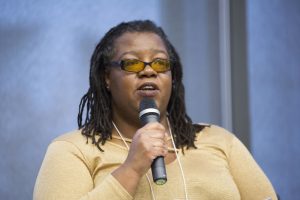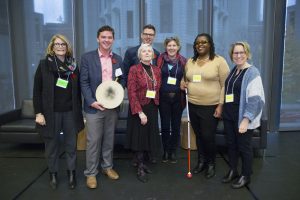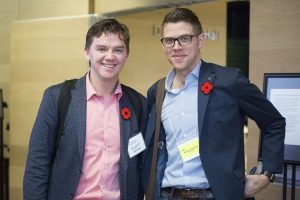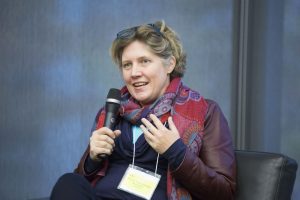Notes from our Making Connections Conference 2017
Pushing the Limits:
How schools can prepare
our children today for the
challenges of tomorrow
Panelists:Kelly Gallagher-Mackay and Nancy Steinhauer: Moderator: Jennifer Lewington: writer and editor on education and urban affairs, including the Globe and Mail and Maclean’s Magazine
|
Overview:How do we prepare children for a future we can’t even imagine? Our public education system will play a key role in helping students navigate an uncertain future. To promote students’ long-term chances for health, happiness and economic security, our schools will need to foster innovators and nimble problem-solvers. This panel will look at some real-life examples of Canadian schools doing extraordinary things – things that will make you say “I want that in my school!” The panelists will provide a vision of what schooling can and should look like in our rapidly changing world, and explore how parents and teachers can realize this vision together. |
Notes from the panel discussion:
Introduction by Jennifer Lewington
This panel will explore: How do we equip children for unpredictable challenges? How do we spread the word on evidence-based practices? What stands between us and a strong education system?
Ingrid Palmer, what roadblocks did you face as a parent?
- School was a battleground
- A place where parents pleaded for resources
- School always redirected problems at school to a home life
- Poor relationships with administrators
- Issues with connection (poor relationships with teachers led to lower achievement)
- Assumptions were made
Aaron Warner, as a teacher, what have your experiences been?
- Roadblocks are put up for students at a young age
- Prescribed and imposed hurdles
Aaron Prosper, as a student, what have your experiences been?
- Students internalize the messages they are given
- But there have been changes (from “I can’t do this because this is who I am” à to “I can do this because this is who I am!”)
Complete video playlist of the panel
Nancy, as a principal, what do you see that works?
- Problems arise when there is a breakdown in the relationship
- What works is when the school community sees themselves as a whole
- There needs to be time in developing relationships amongst the community, and it’s important that everyone has a role
Kelly, as the author, how did you break down the ideals in this book?
- Started with the strengths of the system
- It all starts with a one-student-at-a-time approach
- Teachers know their impact and know the progress they are making
- Students investigate ways that they can make a difference
Aaron Warner, tell us about Genius Hour (specifically in regards to the fact that no one told you to do it or how to do it)
- Genius Hour: Where you can learn anything!
- Strategy: Passion is a motivator (teachers are passionate and students are too)
- Students need time to invest in their passions!
Ingrid, tell us about your positive experiences and the skills you developed as a parent to find pathways that really worked for your kids
- The parent capacity-building model is built into the school
- The team-based approach was the model
- The parent was empowered as a partner, and the expert on the child
- Fostered a sense of partnership by building a relationship with the entire immediate family
- Collaboration with whole family to engage child
- High expectations: child was integrated and important in the school. Students had experiences which allowed them to shine!
- Engagement in whole system: education about the TDSB system and what was offered for all students
Nancy, is what happened at George Webster replicable?
- Yes, but with the acknowledgement that it requires …
- time and money
- a professional network
- training (equity, parent engagement, etc.)
- a guiding mandate: School is the heart of the community
- nurturing relationships between staff, students, and parents
- The model school success was because the system changed what the expectations are and made time and space for the change!
Kelly, when you hear that Ingrid was treated as a partner in her child’s success, what is the implication of this sort of relationship?
- Jean spoke to it
- What enables it is to have a set of broad visions about what happens at school
- Policy discourse vs. the reality that schools bring it to life
- Investment in high expectations of our kids! (system level investments)
- Make sure the vision for well-being feels real and isn’t flaky
- Moral purpose: all kids have good prep in the ‘here and now’ for an unsure ‘then’!
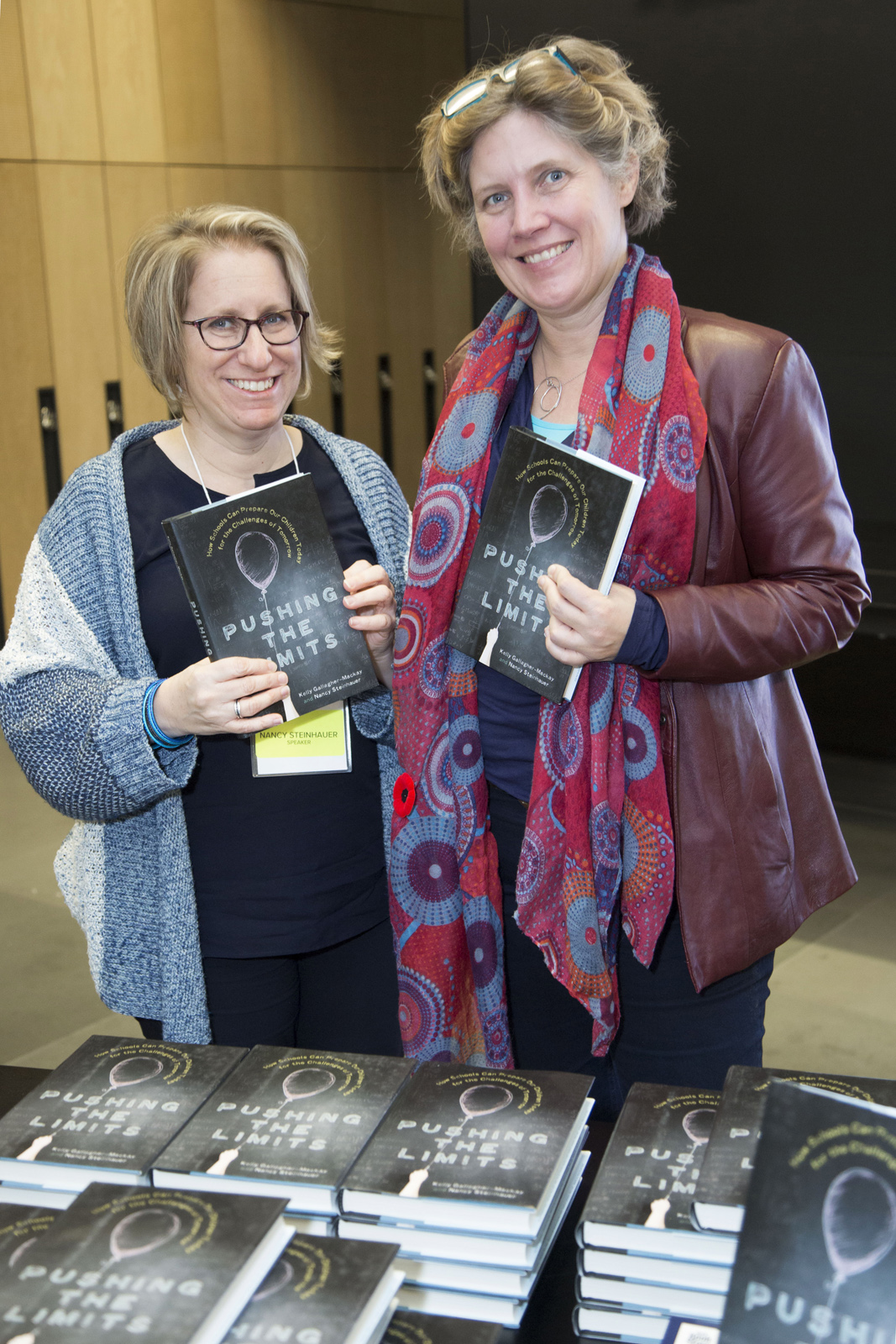 Nancy Steinhauer and Kelly Gallagher-Mackay with their book |
 Jennifer Lewington, moderator |
Aaron Prosper, you were one of the first of your generation to be educated by and for and with an immersive Mi’kmaw education (MK). What did this mean to you?
- Allowed Mi’kmaw to take control of their schooling
- By taking control, it started to change our ways of thought
- Immersion program actually has higher rates of graduation
- Model is successful because it is grounded in culture
- MK schools have some of the highest rates of graduation in the country and have grown the success since the program started in 1996.
Aaron Warner, how do you respond to the challenge of investing in a child’s culture when you might not know the child?
- We have two ears and a mouth for a reason
- Take the time to listen to students
- This opens up the door of investment and the child knows that you care for them and they care for you
- Kids knowing that their learning is tailored for them and to them
- Take the time to listen to students
Kelly, are there any Ah-Ha moments that you had while writing this book?
- Central importance of everyone in the system being a learner
- We need to be active as we think through the problems, change, and learn from the failures along the way
- Requires a broad vision of the purpose for schooling
- Broad measures must be understood
- Knitting together all of the complex issues
Nancy, in regards to your radical math group…. How can we teach math through a social justice lens?
- Ask: How can we make the math culturally relevant to our students?
- For example, we looked at the behavior on the playground
- Gr 1-5
- Collected data about issues on the playground (# of issues and where they were happening)
- Students noticed that there were unbalanced issues between morning and lunch recess
- Students presented a new supervision schedule based on data and concerns
- Students took their experiences and made a real difference in their school
Ingrid, how do we spread these cool ideas? What needs to be done to make the extraordinary become ordinary?
- The model school system is a capacity-building system
- parents work in cluster groups to share practice, success, implementation, challenges,
- Important for schools to equip parents with ON-RAMPS (how to get “in the know” and support their child)
- Service component of model schools is important to engage struggling families.
Aaron Warner, how does tech help you share, connect?
- It’s been transformational in my career
- We congregate online using organized PLCs on twitter
- Using social media, we teach our students how to engage
- We google hangout with other classrooms (use tech to break down barriers on a regular basis)
Aaron Prosper, what do you think are some other tools that we can use to expand?
- Partnership with higher learning
- Where we have the time to look at issues in-depth
- Partnerships with other community groups (like P4E)
- Partnerships with other like communities (other Indigenous groups)
- Importance of environment (gene expression)
- Research has shown that early childhood experience greatly affects the child’s gene expression
- In your schools, create the environment where there are connections to research, medical schools, universities, and use the mental-wellness continuum to look at the whole student
- Native Wellness Assessment Tool
- Tool actually measures hope, longing, meaning and purpose of the child
- Child can experience change after the treatment when those four factors are lifted
Final QUESTIONS for the panel that help us to Push the Limits in our education system:
- Kelly, what question can a parent start to ask at his/her child’s school: What are you doing to prepare my child to change the world? How are you, the school, preparing my child to change this troubled-world that we are living in?
- Nancy: What are you teaching that matters to my kids? How do you know it matters? And how do the students know it matters?
- Aaron Warner: How are we investing our time with each of our students to engage and empower them?
- Ingrid: How do our school systems build a system of reciprocity between all stakeholders?
- Aaron Prosper: What are you doing to go beyond the Calls to Action and what are you doing to not treat those as a checkbox? This is ALL reconciliation.


